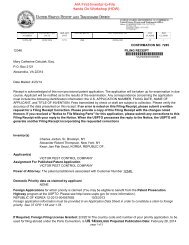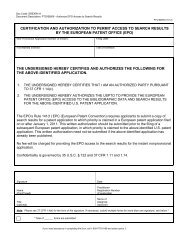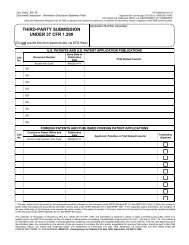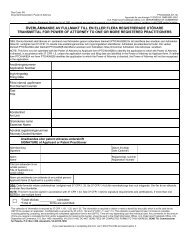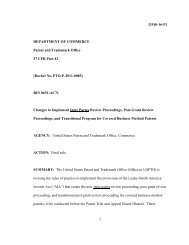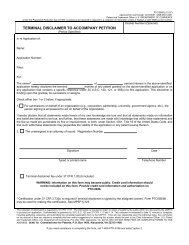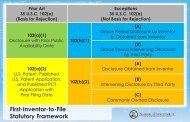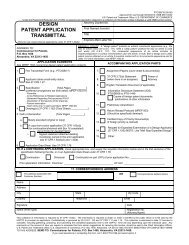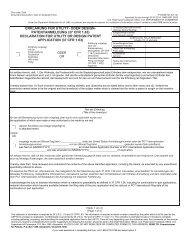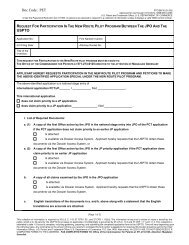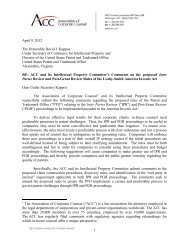USPTO Performance and Accountability Report - U.S. Patent and ...
USPTO Performance and Accountability Report - U.S. Patent and ...
USPTO Performance and Accountability Report - U.S. Patent and ...
You also want an ePaper? Increase the reach of your titles
YUMPU automatically turns print PDFs into web optimized ePapers that Google loves.
Strategic Goal 3: Provide Domestic <strong>and</strong> Global Leadership<br />
to Improve Intellectual Property Policy, Protection <strong>and</strong><br />
Enforcement Worldwide<br />
The <strong>USPTO</strong> develops <strong>and</strong> advances domestic<br />
<strong>and</strong> international U.S. IP policy objectives that<br />
include the establishment of strong <strong>and</strong><br />
balanced IP systems to serve the needs of all stakeholders.<br />
The <strong>USPTO</strong> develops IP policy through information<br />
gathering <strong>and</strong> analysis <strong>and</strong> stakeholder<br />
consultations. Stakeholders include domestic <strong>and</strong><br />
foreign IP rights holders <strong>and</strong> users, consumers, U.S.<br />
government agencies, foreign governments, <strong>and</strong><br />
the public at large. The <strong>USPTO</strong> furthers IP policy<br />
goals through training foreign officials, providing<br />
domestic <strong>and</strong> international educational outreach,<br />
launching strategic cooperation projects between<br />
national IP offices, deploying IP Attachés to critical<br />
regions of the world, <strong>and</strong> advising on the IP aspects<br />
of U.S. trade efforts, including participation in the<br />
current Trans-Pacific Partnership (TPP) negotiations.<br />
OBJECTIVE 1: Provide domestic leadership<br />
on IP policy issues<br />
Provide Evidence on the Economic Impacts<br />
of IP Protection<br />
On April 11, 2012, the Secretary of Commerce<br />
released a report titled “Intellectual Property in the<br />
U.S. Economy: Industries in Focus” co-authored by<br />
the <strong>USPTO</strong> <strong>and</strong> the Economics <strong>and</strong> Statistics Administration.<br />
The report details how U.S. companies in<br />
our most competitive industries are using patents<br />
<strong>and</strong> copyright to protect their innovations, <strong>and</strong><br />
trademarks to distinguish their goods <strong>and</strong> services<br />
from those of competitors. The report identifies the<br />
75 American industries most intensively using IP<br />
protections, <strong>and</strong> uses statistical data from across the<br />
U.S. government to examine both the important<br />
trends <strong>and</strong> economic characteristics of these highly<br />
IP-intensive industries. There are several important<br />
findings contained in the report, including:<br />
MANAGEMENT’S DISCUSSION AND ANALYSIS<br />
Tina M. Tchen, Executive Director of the White<br />
House Council on Women <strong>and</strong> Girls, Director of the<br />
White House Office of Public Engagement speaks<br />
at the Woman Entrepreneurship event at <strong>USPTO</strong><br />
headquarters on March 1, 2012.<br />
FIGURE 22 Average Weekly Wages of Private Wage<br />
<strong>and</strong> Salary Workers in IP-Intensive Industries, 2010<br />
Graph demonstrating that wages in the IP-intensive<br />
industries are significantly higher than in other sectors<br />
of the economy (Source: Intellectual Property in the<br />
U.S. Economy: Industries in Focus <strong>Report</strong>, April 2011).<br />
www.uspto.gov<br />
37


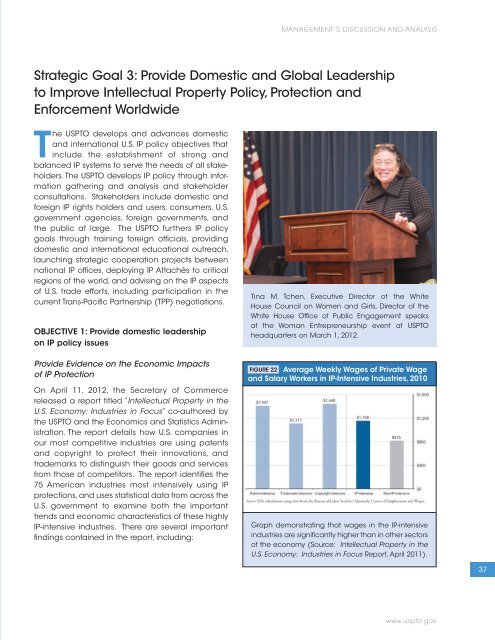
![Printable version [PDF] - United States Patent and Trademark Office](https://img.yumpu.com/51835259/1/184x260/printable-version-pdf-united-states-patent-and-trademark-office.jpg?quality=85)
